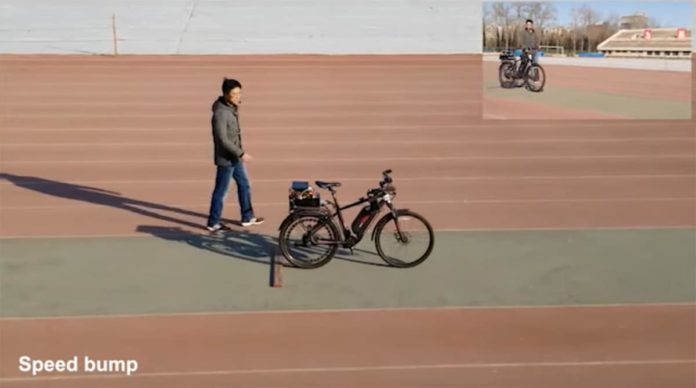It seems like we are one more step closer to the future filled with humanlike thinking machines. A team of Chinese scientists has successfully developed a hybrid AI chip called “Tianjic” that can control an autonomous bicycle.
The bicycle equipped with this chip can not only balance itself but steers itself around obstacles, responds to the voice commands and even make independent decisions. Developed by Luping Shi and colleagues at Tsinghua University, the Tianjic chip works as the brain of the bike.
The Tianjic chip features a hybrid design that combines together two different architectural approaches to developing artificial general intelligence (AGI). AGI is the intelligence of a machine that has the capacity to understand or learn any intellectual task that a human being can.

Both approaches rely on fundamentally different formulation and coding scheme. One is rooted in neuroscience and attempts to construct circuits that closely mimic the brain. The other is grounded in computer science and uses computers to execute machine-learning algorithms.
Combining these two can enable a single computing platform to run diverse machine-learning algorithms, brain-inspired circuits, and reconfigurable building blocks, among others.
The two approaches in cooperation with each other run artificial neural networks for obstacle detection, motor and balance control, and voice recognition, as well as conventional software.
According to the paper on the research, published in the journal Nature, the team has designed a self-driving bicycle – equipped with a camera, gyroscope, speedometer, driving and steering motors and a Tianjic chip – to evaluate how their attempt at an AGI chip would fare in a road test.
As you can see in the video, the bicycle successfully performed obstacle detection and avoidance, balance control, voice command recognition, tracking and decision making under different road conditions.
Researchers suggest such a hybrid architecture could be crucial for the future of artificial intelligence.
